Litton Tunnel
Litton Tunnel
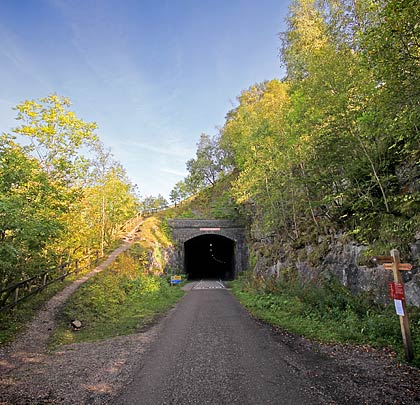
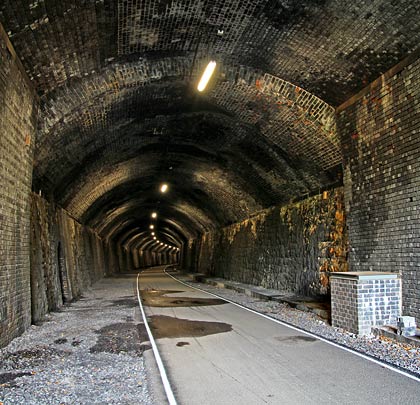
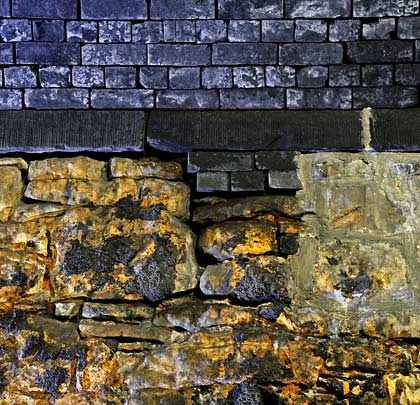
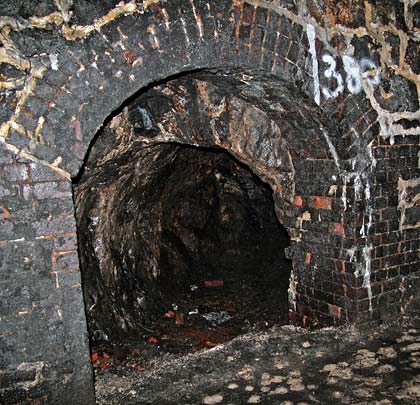
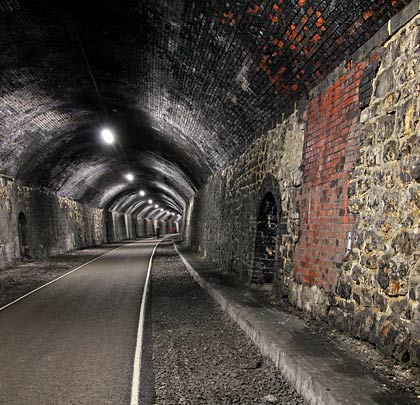
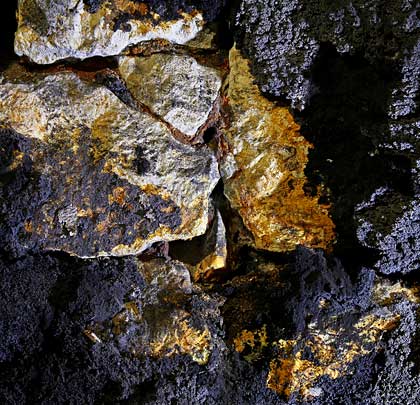
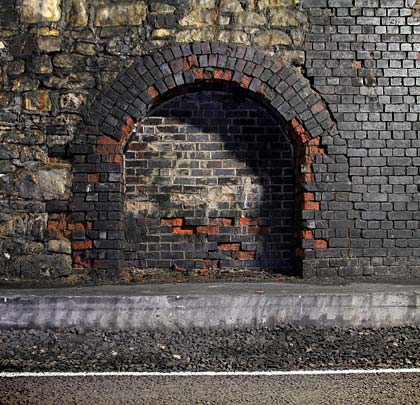
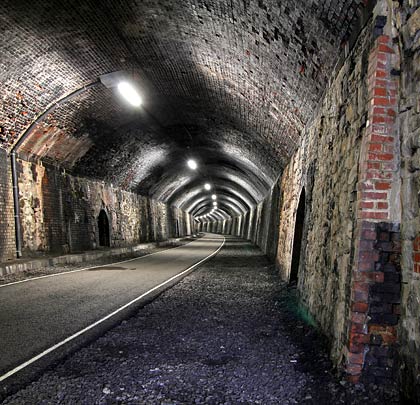
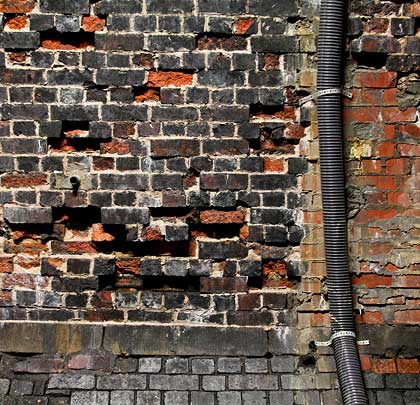
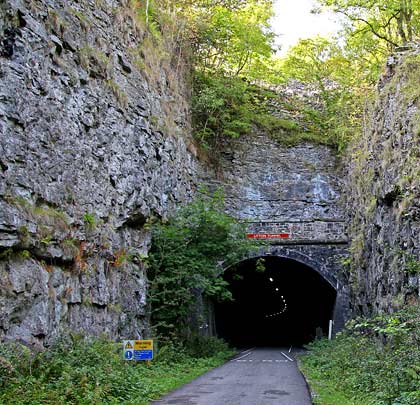
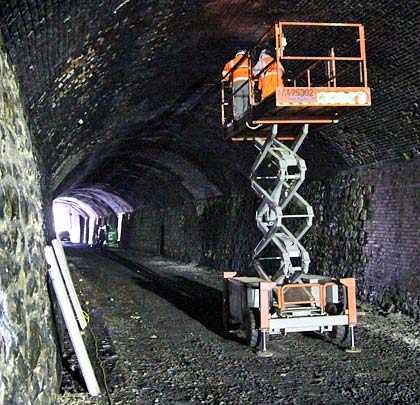
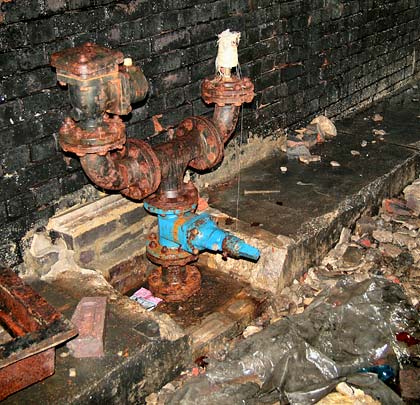
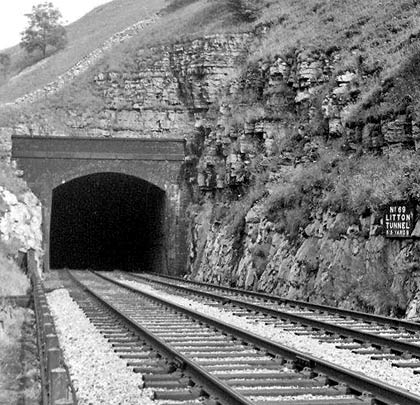
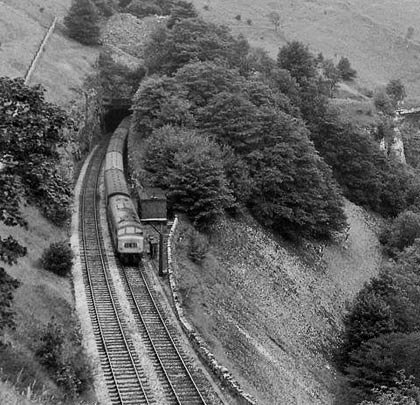














30th May 1863 saw the opening of an exceptional section of railway, eventually forming part of a main line link between London and Manchester. Built by the Midland, it cut a route through the limestone landscape of Derbyshire’s Wye Valley between Hassop and Buxton, demanding eight tunnels totalling 2,426 yards, two major viaducts and a number of smaller ones in the space of just 11 miles. But the audacity and investment did not live long. Barely a century after it opened, most of the route became an unlikely victim of the Beeching-era cuts, officially closing on 1st July 1968.
In 1981, the Peak District National Park Authority concluded lengthy negotiations with British Rail to secure the trackbed. Along it was laid the Monsal Trail – a nine-mile path linking Blackwell Mill Junction, east of Buxton, with a bridge over Coombs Road on the Matlock side of Bakewell. Since the summer of 2011, four of the tunnels – which had previously been closed for safety reasons – have been opened up for walkers, cyclists and horse riders to use, creating an easy linear connection between the Trail’s two ends.
Litton Tunnel, structure number 69, follows a curved alignment, extending for 515 yards. Neither approach cutting is long thanks to the steeply rising hillside on its south side. At the east end, the cutting features impressive vertical rock faces.
Westbound trains encountered a very short straight section before a long southerly curve of 40 chains radius. The gradient throughout rises at 1:100. The predominant lining material is engineering brick although patch repairs – some of them extensive – have been carried out in both red brick and masonry. The tunnel’s segmental roof arch is supported on limestone walls which lean outwards at the top. At the west end, a change in section sees much higher side walls and an arch with a very shallow rise.
Refuges of inconsistent sizes are provided at both sides. The installation of a 12″ concrete-encased water main, located at the foot of the south wall, was authorised in 1979. One refuge in the south wall leads to a short chamber, reputedly cut in connection with mining activity. Whilst generally dry, small deposits of calcite are found in places.
 January 2013
January 2013




